Once you’re ready to drive electric (we hope we convinced you in our last post), you’ll have to determine how and where to charge your new vehicle. 80% of charging happens at home and 20% at destination and fast chargers, which are essential for road trips. Today we’ll address how to seamlessly get electrons into your car at home based on our seven years of driving electric. Next post we’ll take you on a roadtrip charging adventure.
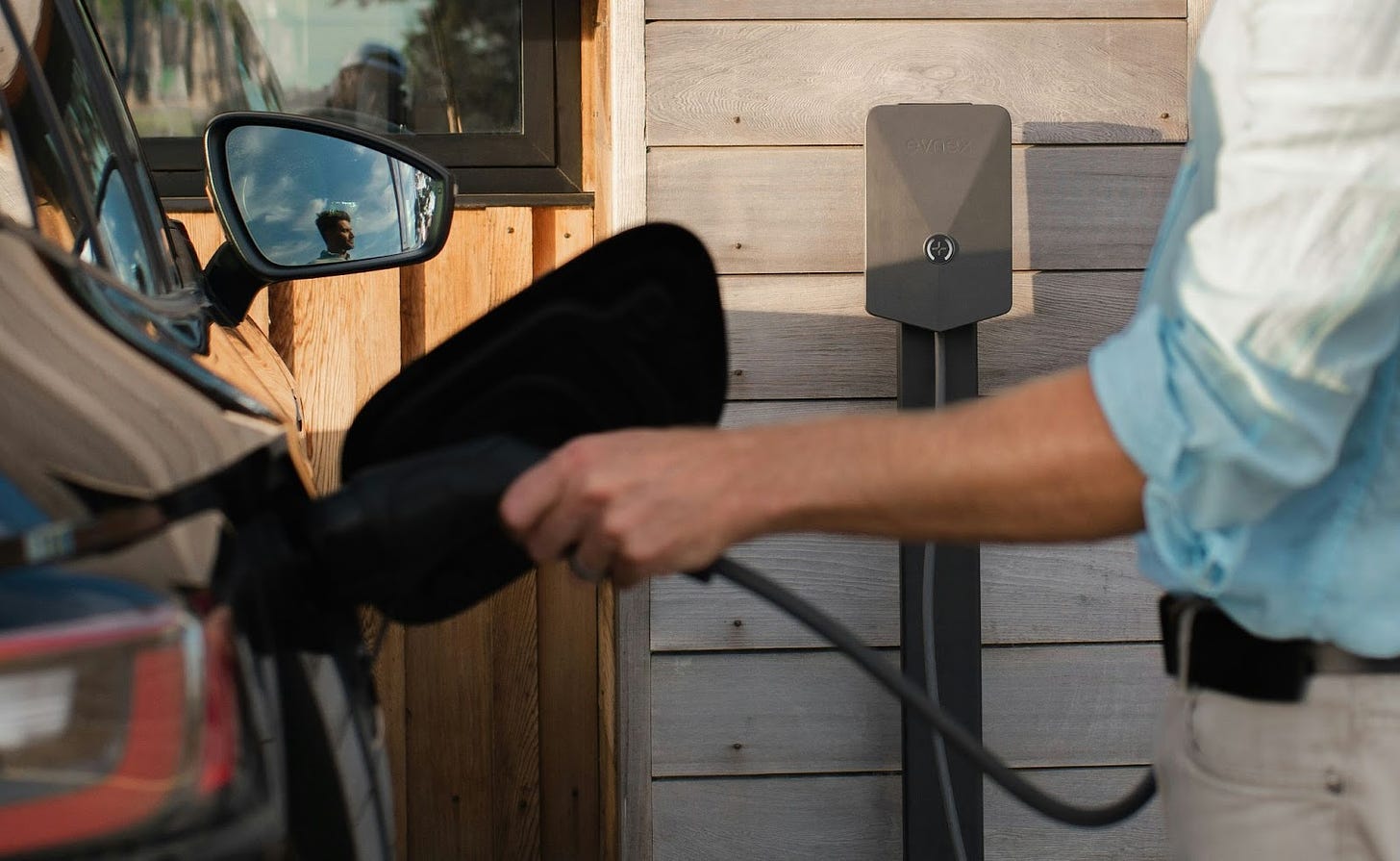
Charging at Home: Level 1 vs. Level 2
When we bought our first EV in 2017, we were surprised to learn we could plug it into a standard 120 volt outlet for what’s called “Level 1 charging.” This charging speed is also sometimes referred to as “trickle charging” because it provides 3-5 miles of range per hour. It’s a totally reasonable option and worth a try if you’re a new EV owner debating about investing in a home charging station. Yes, it’s slow, but if you plug in every evening, you’ll get 40-60 miles overnight, which is generally enough for daily driving needs. (The average person drives 37 miles per day, which would take 7-12 hours of Level 1 charging depending on your vehicle.)
For our first four years of EV ownership, we relied on a standard outlet on the side of our house and it wasn’t that bad. It was a little clunky since we don’t have a garage or driveway (more on that below) but it worked. The big downside is that it sometimes required us to plan days ahead of time when fueling for a road trip, and without stopping at a fast charger, we couldn’t spontaneously go for a long drive. But we’re planners so this wasn’t too much of an issue for us.
If you want more flexibility and faster speeds, consider “Level 2 charging.” It provides 15-35 miles of range per hour flowing from a 240 volt outlet, which is the same type of outlet your dryer and electric stove uses. This is also the same charging speed you’ll find at destination chargers like hotels or grocery stores. We upgraded to Level 2 in 2021 and now fully charge our 300 mile range vehicle overnight, which is hands down much more convenient.
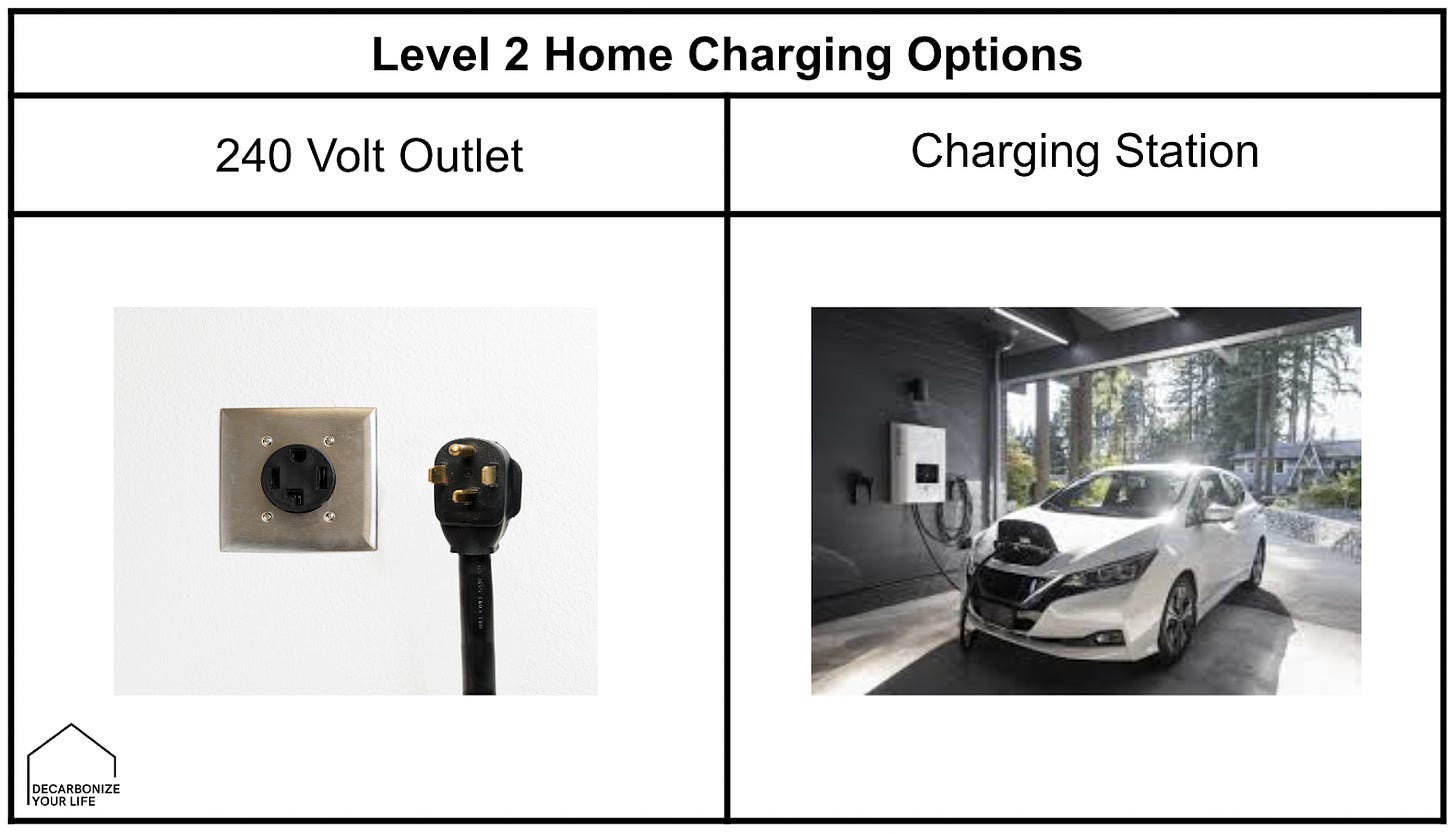
Likely the cheapest Level 2 charging solution is a simple 240 volt outlet because it doesn’t require a home charging station. However not all EVs come with a 240 volt charging cable (Tesla stopped including any charging cable with vehicles in 2022) so you may have to buy one to go this route.
The other option is a home charger, which offers the convenience of a built-in cord that plugs into your car, much like at a gas station. We went this route for a family house in Cleveland that’s often rented on Airbnb, and we wanted to encourage road tripping guests to drive electric with the convenience and speed of Level 2. Home chargers come in many designs and charging speeds and currently range from $300-$700 plus the cost of install. Check if your utility offers a rebate for home chargers.
On a related note, some of the newest (and priciest) EVs and chargers enable drivers to power their homes during an outage by drawing on the electricity in an EV battery. Ford’s Lightning Pickup truck was the first to do this, and Tesla, Chevy and VW plans to follow suit.
In addition to the higher cost of install, there are a couple other downsides of Level 2 charging. First, higher voltages may strain the local utility’s grid and require more carbon intensive fuel sources which is what we all aim to avoid by driving electric. For this reason, it’s important to charge during off-peak hours meaning the times of day where there’s not as much electricity demand. We enrolled in a local utility program that incentivizes us to charge at night. Second, older homes with smaller electrical panels might not have panel capacity for an EV charger. A potential workaround may be to share an existing 240 volt outlet between your EV and an appliance like your dryer using something called a “circuit splitter.” This device pauses your EV charging while you use the other appliance plugged into it.
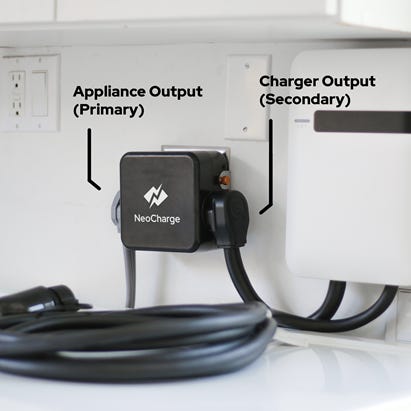
Charging as a Garage Orphan
These charging options are quite convenient if you live in one of the 63% of US homes with a garage or driveway. But if you live in one of the 37% of homes or apartments without dedicated parking, charging your EV can require a little creativity. But these “garage orphans,” as the industry calls them, can still go electric, albeit with a bit more planning. There is always the option of public charging stations, you can’t beat the convenience of charging at home so we offer a few charging hacks based on our personal experience.
While we are lucky enough to own our home, we’re technically garage orphans because we turned our garage into an Accessory Dwelling Unit and depaved our driveway to plant a garden. Since becoming car owners in 2017 (our first car was electric), we’ve parked on the street in front of our house. For four years we charged our 85 mile range Nissan Leaf, and then 320 mile range Tesla, using a fifty foot extension cord that plugged into a 120 volt outlet, on the side of our house, and ran over our retaining wall and across the sidewalk.
We wrote in depth about this a couple years ago describing this clunky approach that required a cord protector strip, to prevent neighbors from tripping, and a plastic box to cover the connection between the extension cord and car charger to keep it dry during Portland Oregon’s many rainy months. Was this set up ideal, attractive, or recommended by professionals? No. Did it work without issue for us? Yes. Do we recommend it to others based on our research? No.
The more scalable, long term solution for garage orphans might come from cities and utilities partnering to provide on-street charging infrastructure that’s accessible for every apartment and home. While there are some early leaders, this reality is still a ways out.
Our Solution
Three years ago, we opted for a more sustainable charging hack: a Level 2 outlet closer to our car that does not require an extension cord. We opted for an affordable outdoor rated outlet rather than an official Level 2 charging station. Joe dug the trench. An electrician made room in our circuit breaker and ran the outdoor rated conduit to a new box attached to our retaining wall. Labor and parts came in around $500.
Since we park on the street, we still run the car’s charging cable across the sidewalk (and cover it with a new and improved cord cover) but there’s no longer a risk of the extension cord overheating. The charging time went from 50 hours to 5 so the cord crosses the sidewalk for much less time.
A Charger for (Almost) Every Home
A report by the National Renewable Energy Lab (NREL) estimates there will be 33 million EVs on US roads by 2030, which means we’ll need 28 million charging ports. The majority of these ports will be private residential chargers. There are 144 million homes in the US, so that’s far from a charger for every home, but it’s certainly progress. If you pay attention, you’ll notice a steady increase in home chargers around your neighborhood.
Once you find the right home charging solution, filling your battery becomes as convenient and common as charging your phone. Most importantly, you’ll save money and stop feeling guilty about spewing fossil fuels into the air every time you pick up groceries.
More on Home Charging Hacks + Our All Electric Home in the News
Confessions of a Sidewalk Charger. Deep dive on our adventures in charging without a garage and why we no longer use extension cords.
The All Electric Home. Around the House Northwest recently featured our home as a case study for residential electrification.




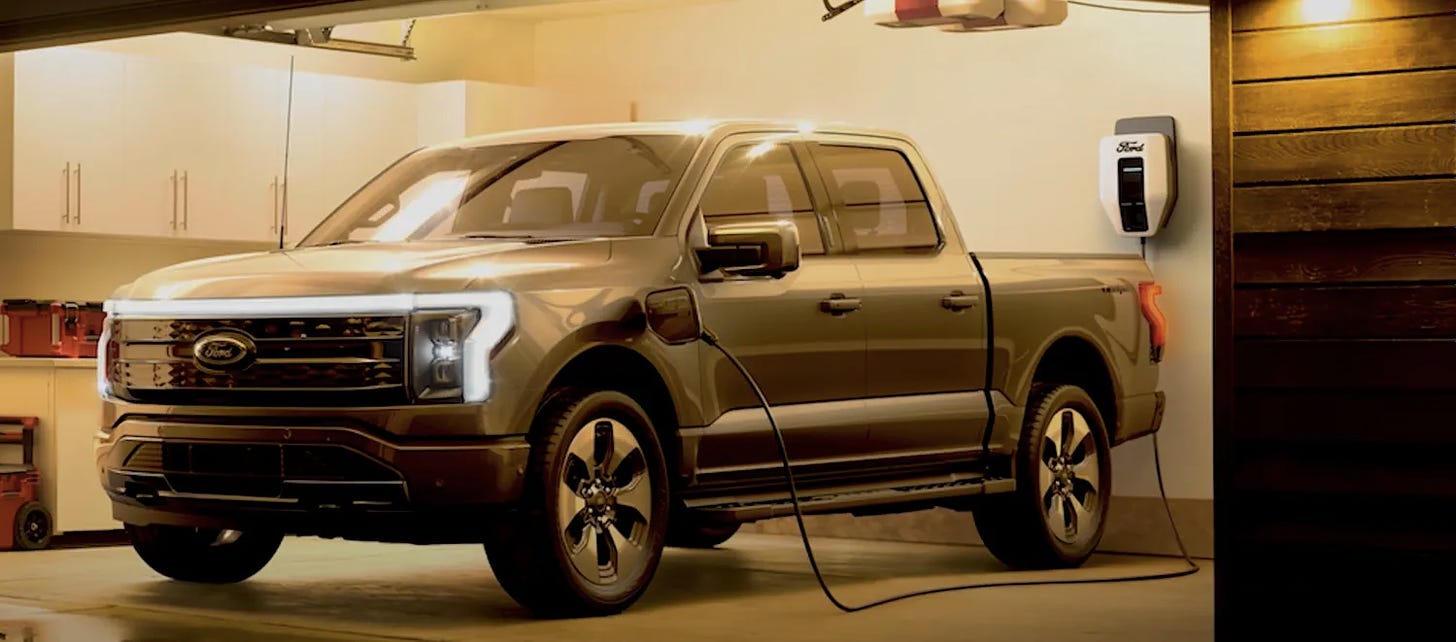
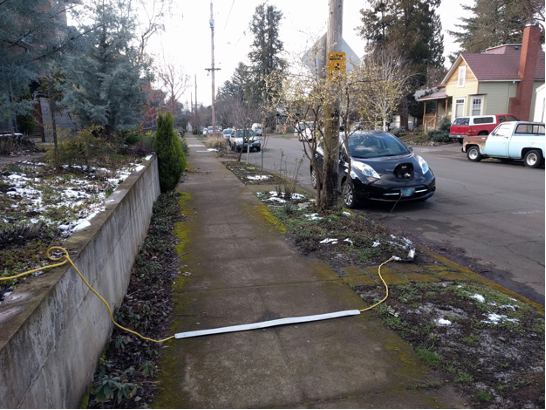
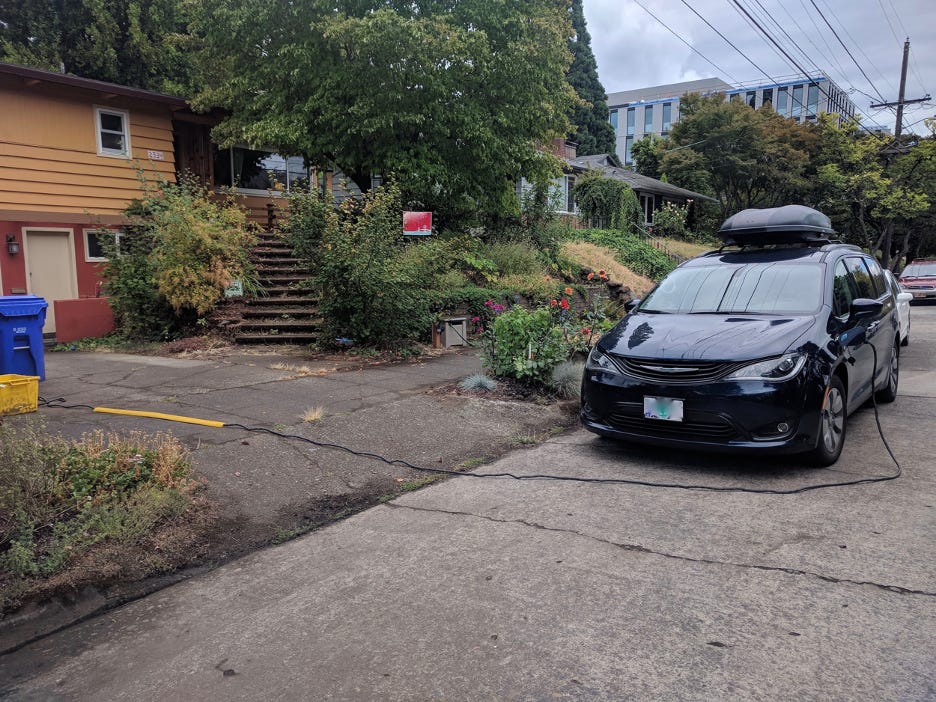
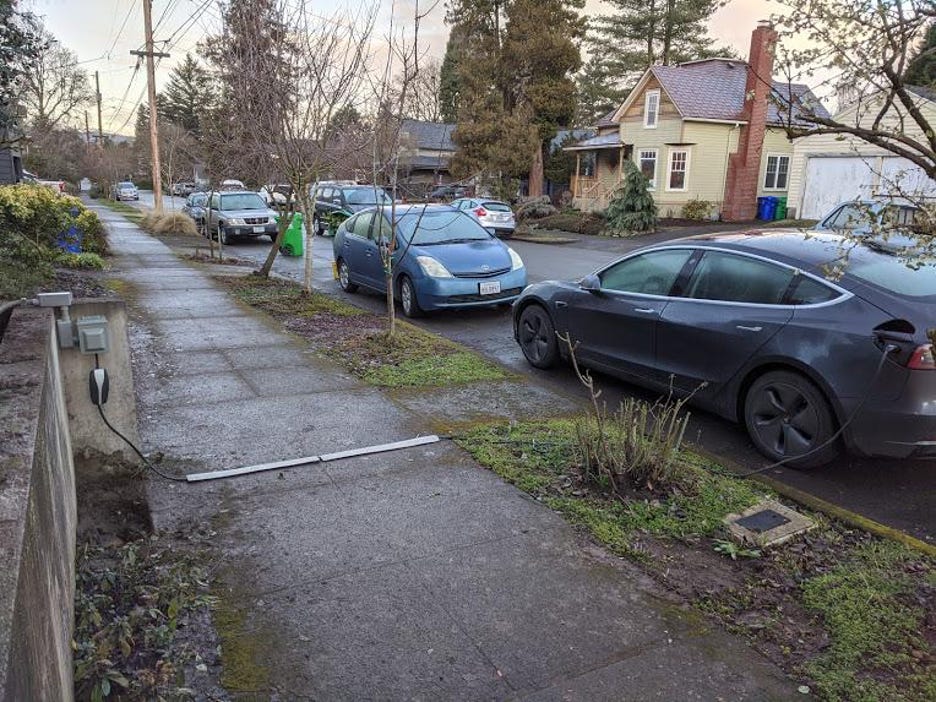
I appreciate the problem, but is it really necessary to run your charging cable over the sidewalk? Could you not run your charging cable through a conduit under the sidewalk? Just thinking of kids on skateboards and elderly folks who might not be picking up their feet. I would hate to see EV owners become a target.